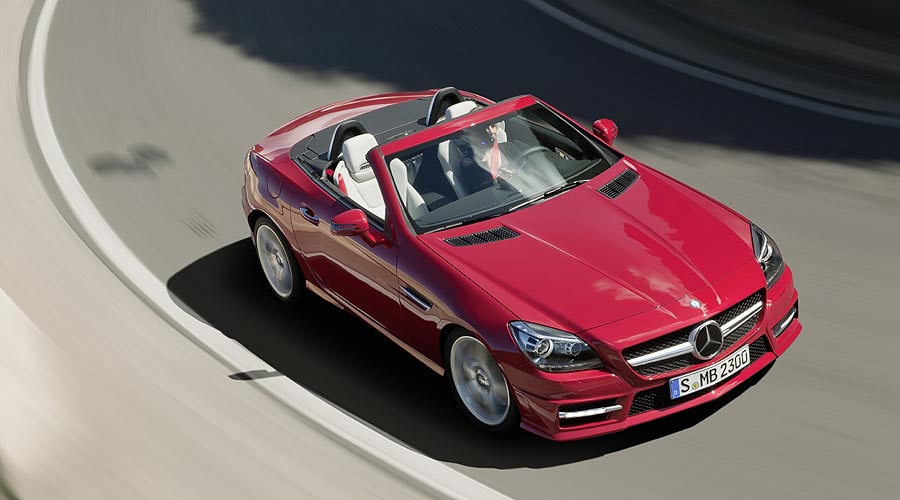
This is the new Mercedes-Benz SLK, writes John Simister. How new? “The previous SLK was not a car in which we had to change everything,” says project chief Timo Harstock, “and this new one uses many standard Mercedes-Benz modules. We mainly changed what the customer can see.”
That is refreshing honesty. The SLK already had its own platform – it is not based on the C-class, for example – and as much as possible has been carried over under the skin. The new car, however, has a new character, and three main things help create that.
One, it looks assertively racy in a way an SLK has never quite managed before. Both previous generations (launched 1996 and 2004) have been neat, pretty cars but they have lacked the presence and attitude of the larger SL just as their 190 SL ancestor did over half a century ago. This time there are strong elements of the mad, bad SLS supercar to be seen (if not heard), such as that squared-off snout and the solid-aluminium detailing on the dashboard. Some recent Mercedes-Benzes seem needlessly over-styled, but this one works rather well.
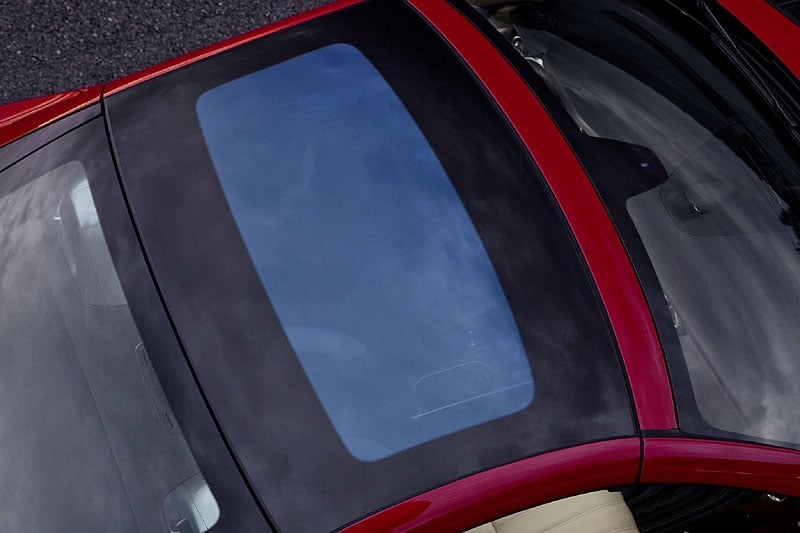
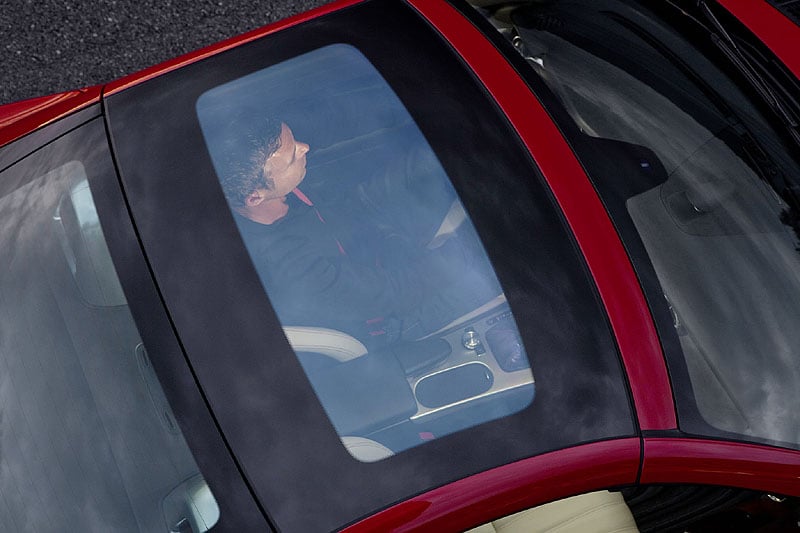
Two, its coupé-cabriolet roof – an SLK feature from the start – can now be had with Magic Sky Control. Press a button and the clouds disperse to reveal a shining sun, showing a degree of control over the environment you would never have thought possible. Actually, it's not quite that powerful (it's coming with the next model), but that button-press does render the roof either opaque or transparent to choice, depending on whether or not an electric current has aligned the tint layer's molecules. Ultra-violet and infra-red radiation are screened either way.
And three, the new engine range (now with stop-start systems) appears to be surprisingly frugal. The maker's claim of up to 25 per cent better fuel economy might be true on the official tests, but it would be a miracle if such savings were achieved in the real world. Nevertheless, your tax bill will show the benefit of the mere 167g/km of CO2 that are reckoned to emerge from the tailpipes of the 306bhp, 3.5-litre SLK 350. That those two measures can appear in the same sentence is verging on the extraordinary.
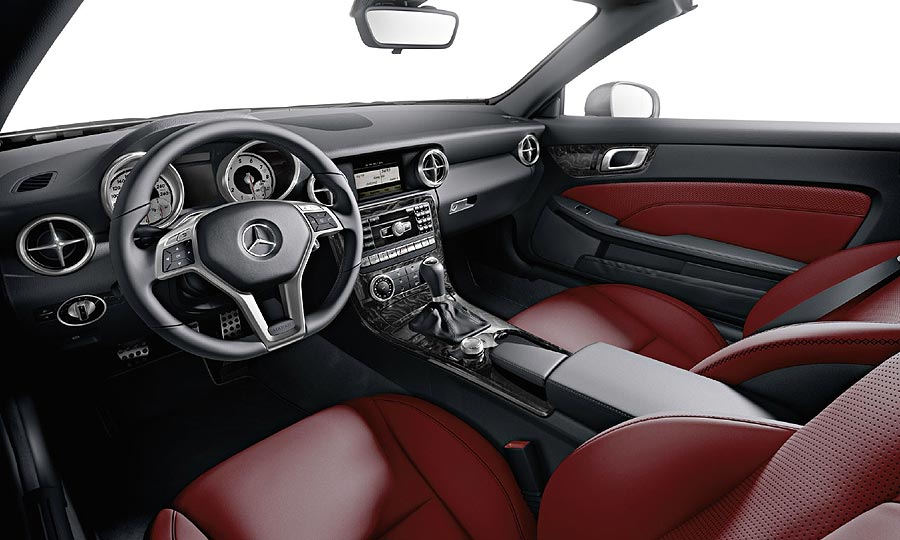
This V6 is a very pleasing engine to drive behind, with a deep, sonorous exhaust note and a hefty punch which the seven-speed automatic makes easy to exploit. It shifts definitely but smoothly, and its paddleshift manual mode is exactly that: unlike some past M-B automatics, it stays in the gear you have selected rather than using that gear as just an upper limit. So you don’t have to suffer unbidden shifts when threading your swift way along a mountain road.
As tested in Tenerife (chosen in the hope of early-year sunshine, fulfilled apart from an epic thunderstorm in the evening), the SLK 350 (yours for £44,115) had the full Sport suspension pack complete with adaptive dampers and Direct Steer. This last item has an extra-quick response around the centre and calms down as lock is wound on. It makes for an alertness which serves to disguise the V6-engined SLK's relatively heavy nose, and the result is an agility and precision not previously encountered in a big-engined SLK, AMG-tuned examples included (of which there is not yet one in the new range).
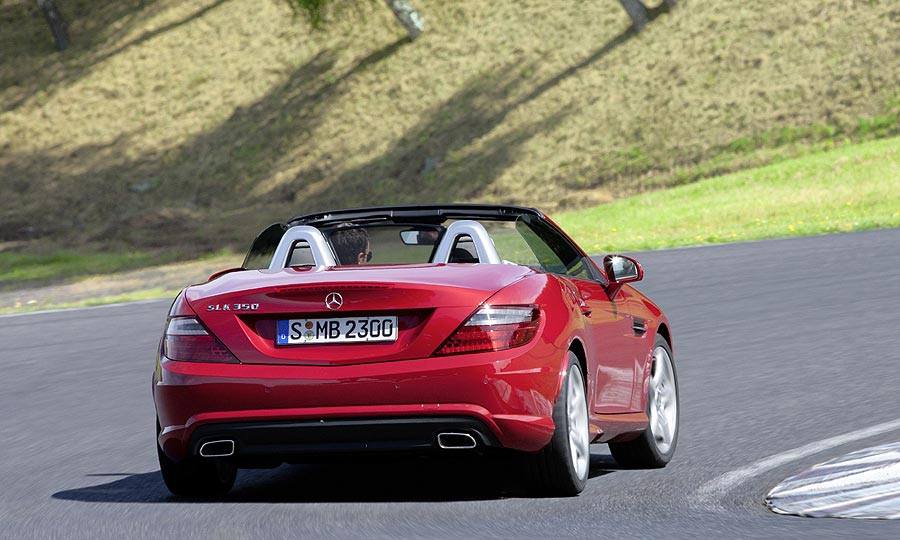
For me, though, the star lies at the other end of the range. The 1.8-litre SLK 200 now uses a turbocharger instead of a supercharger, which goes some way towards explaining how it manages a 158g/km CO2 score despite its 184bhp. That's with a six-speed manual transmission, the only SLK so fitted; opting for the seven-speed auto brings this down to 151g/km thanks to the long seventh gear. There's also a 204bhp version of this engine, linked only to the auto and called SLK 250. Mercedes-Benz's naming policy is in logical tatters, but it has been thus for a long time now.
An SLK 200 manual, with normal steering, is a car which doesn't hide behind sense-distorting electronics and self-shifting transmission interfaces. It is exactly what it appears to be, a car in which the driver does the work and makes the decisions based on unambiguous inputs. The steering is natural and accurate; the gearchange as good as those of manual Benzes were once springily, snatchily bad; the engine has enough fizz and urge not to make you crave more. As a sports car for the enjoyment of the driving process, rather than for the facilitation of a sybaritic suntan, it's the best SLK and the only one that really deserves the sports-car label.
At prices from £29,970 (significantly less outlay than a 'basic' Porsche Boxster demands), it's also the cheapest. That's what I call a result.
Text: John Simister
Photos: Mercedes-Benz
ClassicInside - The Classic Driver Newsletter
Free Subscription!





